
A Brief History of Land Art: From the Prehistoric to the Present
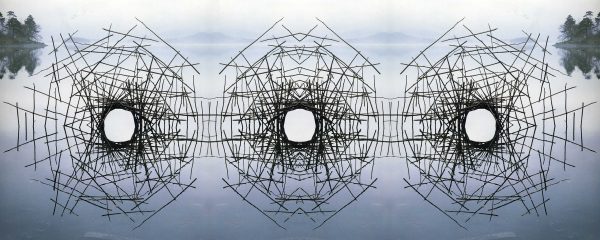
As Britain recovers from a summer months in which lots of confronted the risk of wildfires and drought, and which left London’s persistently lush inexperienced spaces sunshine-bleached, the realities of the changing weather have under no circumstances felt more immediate. Many artists are reconsidering their practice to satisfy the stark realities of the moment, as acquainted temperature styles grow to be far more erratic and fears loom that, with out urgent intervention, daily life as we know it could be remaining radically altered in the coming yrs.
Environmentally engaged artwork has taken numerous guises throughout the program of artwork history. Land art— art that takes the earth as its subject— initially emerged as a movement in the late 1960s in tandem with the broader social and political shifts of the period. The classical landscape artwork of the 17th century had arrive to seem quaint and old-fashioned to radical-leaning young artists at a time when publish-war minimalism and the burgeoning conceptual art movement dominated gallery areas. Usually known as Earthworks, course of action art, or ecologic art, land art engaged various media—most generally sculpture, images, or web-site-distinct installations that sought to rework the connection of the viewer to their natural environment. Functions ended up usually mounted in distant and rural destinations artists ended up keen to break absent from amplified urbanization and the cultural monopoly significant metropolitan areas held above inventive creation. Whether or not the result was totemic, large-scale items carved into the earth by itself, or ephemeral, quick-phrase interventions intended to mirror the ebb and movement of natural procedures, land artists occupied a new terrain as they examined how a write-up-industrial planet experienced altered the elaborate and more and more fragile partnership amongst guy and mother nature.

Robert Smithson’s Spiral Jetty and The Earthworks Movement
Potentially the most iconic perform of this period is Robert Smithson’s Spiral Jetty (1970). Reminiscent of an unfurling fern frond, the 1,500 foot long spiral extends anti-clockwise from the north-japanese shore of Utah’s Great Salt Lake. Reaching 15-ft wide, it is formed of 6 thousand tons of soil and basalt rock. Smithson chose the place for its unique ecological capabilities. The lake is a terminal basin—what’s recognised as endorheic—meaning it is in essence barren and lifeless. The place stands in the shadow of unused oil rigs, ghosts of market that loom above the fluctuating h2o concentrations of the basin. The large existence of algae in the h2o presents it a purplish tint (in aerial visuals the lake generally appears a purple wine shade). The basin is wealthy with salt-crystal deposits with a filigree-like texture that fascinated Smithson and which he took as his inspiration for the shape of the jetty. A stop by to the Spiral Jetty is to working experience it as an outlook, an invitation to thoroughly embody the landscape and its shifting scale and dimension.
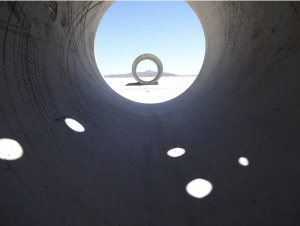
Girls Artists in the 1970s-1980s Land Artwork Movement
In the nearby Fantastic Basin Desert, Nancy Holt—who was married to Smithson until eventually his dying in 1973— developed Sunshine Tunnels (1973-1976), four concrete cylinders reaching 18-foot extended and meant to frame the movements of the mounting and environment sun. Each tunnel incorporates a collection of modest holes that map find constellations, small apertures via which to watch the earth’s rotations and celestial shifts. Holt was not the only female artist to lead to the motion. Hungarian-American artist Agnes Denes (born 1931), thought of a pioneer of environmental artwork, infused her operate with social-political tips. In 1968, she established Rice/Tree/Burial, a web page-specific efficiency piece in which she sowed rice into a field in Sullivan County, New York. She wrapped thick, industrial chains close to bordering trees and buried a capsule of her haikus beneath the ground, to stay there for a thousand many years. The rice represented sustenance, conception, and initiation the chained trees spoke to bondage and human interference and the poetry was consultant of the summary, creation itself. In 1982, Denes created Wheatfield: A Confrontation on a piece of landfill in Battery Park Town on Manhattan’s southern tip. The two-acre industry of grain was an act of protest, supposed to emphasize expanding ecological worries and widening financial inequality. The wheatfield would past only 3 months, but its long lasting impression is a placing juxtaposition— the clash of the organic with the man-manufactured, a stirring riot against the imposing properties of Wall Avenue that continue being emblematic of present day capitalism.
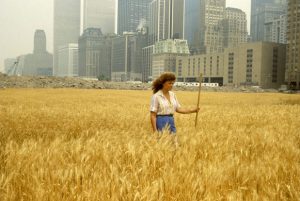
Cuban-born artist Ana Mendieta (born 1948) was impressed by visits to pre-Colombian websites in Mexico and Central America. She was drawn to pantheism and exploring feminine archetypes. In Silhueta (1973) she painted her silhouette into sand, carving the define of her human body into the earth, etching it into clay beds, sand formations and rock faces. She used natural and organic components like moss, branches, or bouquets to outline summary feminine figures. Mendieta termed her apply ‘earth-human body-work’, and noticed her art as a means to dialogue with the all-natural entire world as an emigrant extracted from her native land, she sought to re-set up the bond to involving self and habitat. She was sooner or later capable to return to Cuba, carving feminine types into limestone grottos in the outskirts of Havana, right before her untimely death in 1985.
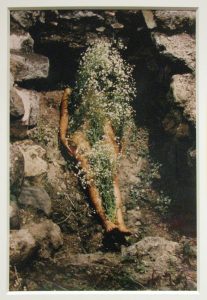
The extraordinary scope of the American West—with its deserts, mountain ranges, arroyos— delivered a sort of spaciousness that invited big-scale creative wondering. A lot of the seminal perform of the Earthworks motion can trace its origins to prehistory—whether petroglyphs, Palaeolithic cave paintings, or Aztec stone sculpture Robert Smithson was most likely influenced by Native American serpent mounds and the Nazca Strains of Peru. The adjacent growth of land art in the British isles would just take a distinct type, to satisfy the contours of the land by itself.
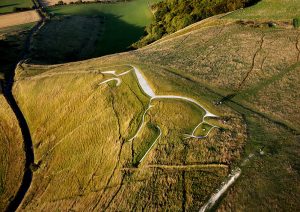
Land Artwork in Britain 1970s-present
The Uffington White Horse is a mysterious, 360-foot horse carved into the Oxfordshire countryside, the grooves of its tasteful limbs loaded with white chalk. Some archaeologists feel the horse to be an example of a photo voltaic deity, a neolithic strategy in which the sunshine travelled across the sky on a horse-drawn chariot. Like nearby Stonehenge, part of the attract the white horse, now 3,000 yrs old, is the mythos that surrounds its unknowability. British topography is dotted with land-based artefacts that probably held non secular significance for Celtic and druid tribes, and were extremely influential to British artists of the early land art interval.
Andy Goldsworthy (born 1956) results in contemplative do the job sensitive to the temporal attributes of the land. Working with discovered materials— feathers, pinecones, icicles— he makes formations that provide as meditations on natural rhythms. In 2003, Goldsworthy created Drawn Stone in the de Younger museum in San Francisco utilizing imported sandstone from his hometown in Yorkshire. He took a hammer to the rock to make unpredictable breakages reminiscent of the fault strains of the metropolis itself. The strains have been negligible, discrete, and typically went unnoticed the function captured the delicate, a little bit ominous mood that permeates a town which seasoned just one of the deadliest earthquakes in heritage and continues to be vulnerable to extreme tectonic shifts.
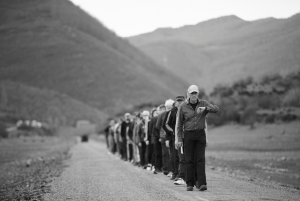
In 1972, English sculptor Hamish Fulton (born 1946) put aside his equipment and took to the road. A self-termed ‘walking artist’ Fulton pioneered wayfaring as a imaginative act, employing textual content, illustration and images to trace his routes through the British countryside. The artwork is the journey itself. Fulton’s walks are a meditation, a ritual. Like Fulton, sculptor Richard Long explores walking as artwork sort in A Line Made by Going for walks (1967). As a result of ritual and repetition, Prolonged treads into the turf until finally new tracks and paths are formed in the landscape. An exploration of memory and wayfinding, his perform recalls a minimalist, anti-materialist technique, a critique of the purchaser-centered art-current market.
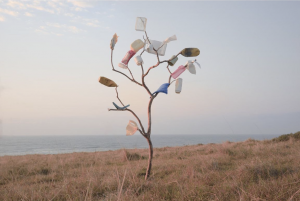
Modern-day Eco-art in the Age of the Anthropocene
As we grapple with what it means to inhabit the so-termed Anthropocene, a time of raising geological importance, lots of artists are combining their function with political activism. In 2002, American artist Aviva Rahmani situated 4 large boulders in Vinalhaven Island, Maine, and painted them blue. She regarded as the perform an ‘ecovention’ intending to attract attention to an obstructed causeway on the Pleasant River. Her program succeeded, main local authorities to donate $500,000 to the restoration of the estuary. Pembrokeshire-centered Jon Foreman requires the beaches of Wales as his canvas, developing striking, whorling designs from various colourful flotsam. Dutch photographer Thirza Schaap will take a distinct technique to beach front-combing with her collection Plastic Ocean, applying litter and squander she finds washed up on the shoreline to build striking, nonetheless-life compositions that illuminate the menace of about-usage.
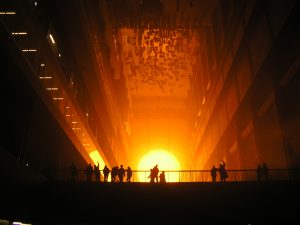
Icelandic-Danish artist Olafur Eliasson—best known for his Turbine Hall commission The Climate Task (2003) – in which guests bathed in the heat shine of a massive, glowing sun— has lengthy woven environmental recognition into his get the job done he not long ago created Earth Speakr– an augmented actuality application in which little ones are invited to style a CGI encounter which maps their expressions. Faces are then transplanted onto the earth’s surfaces, offering voice to their concerns about the environmental disaster and establishing a new awareness all over coexistence, reciprocity and stewardship. Olafur Eliasson Studio recently dedicated to reaching carbon neutrality, including a no-fly rule in fee contracts to transportation content, making a template for other artists to do the similar as they fulfill the needs of a transforming entire world.
